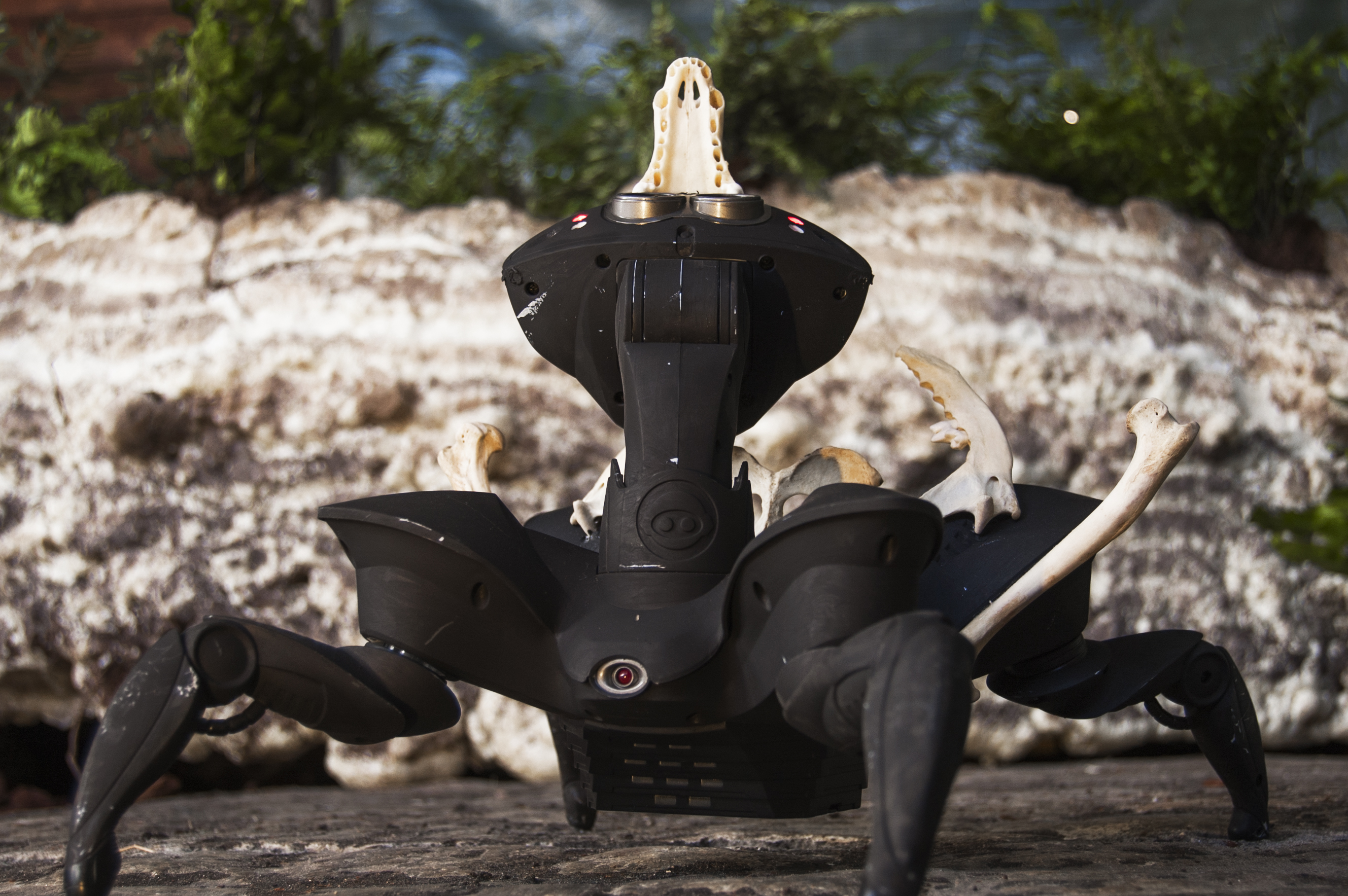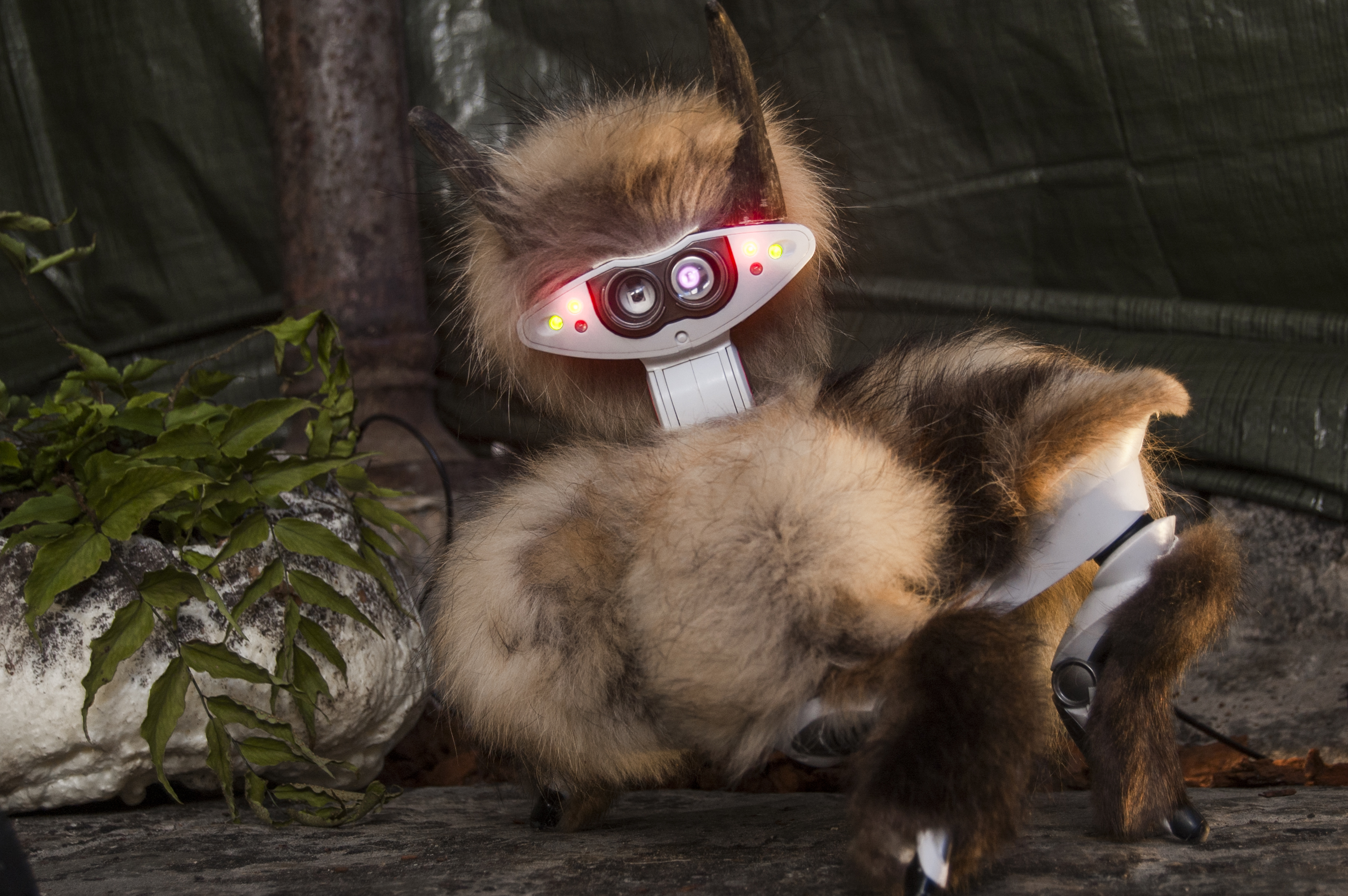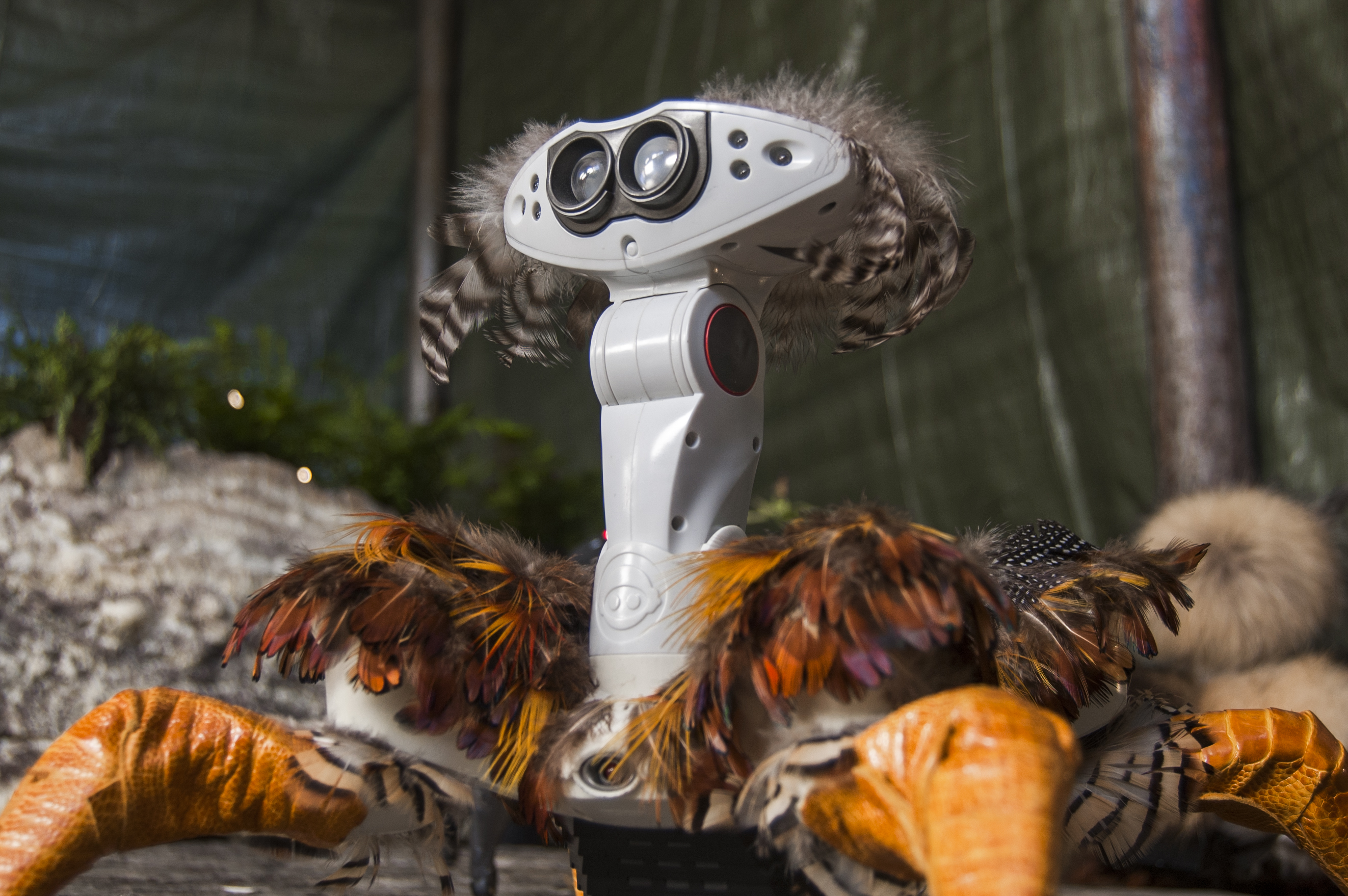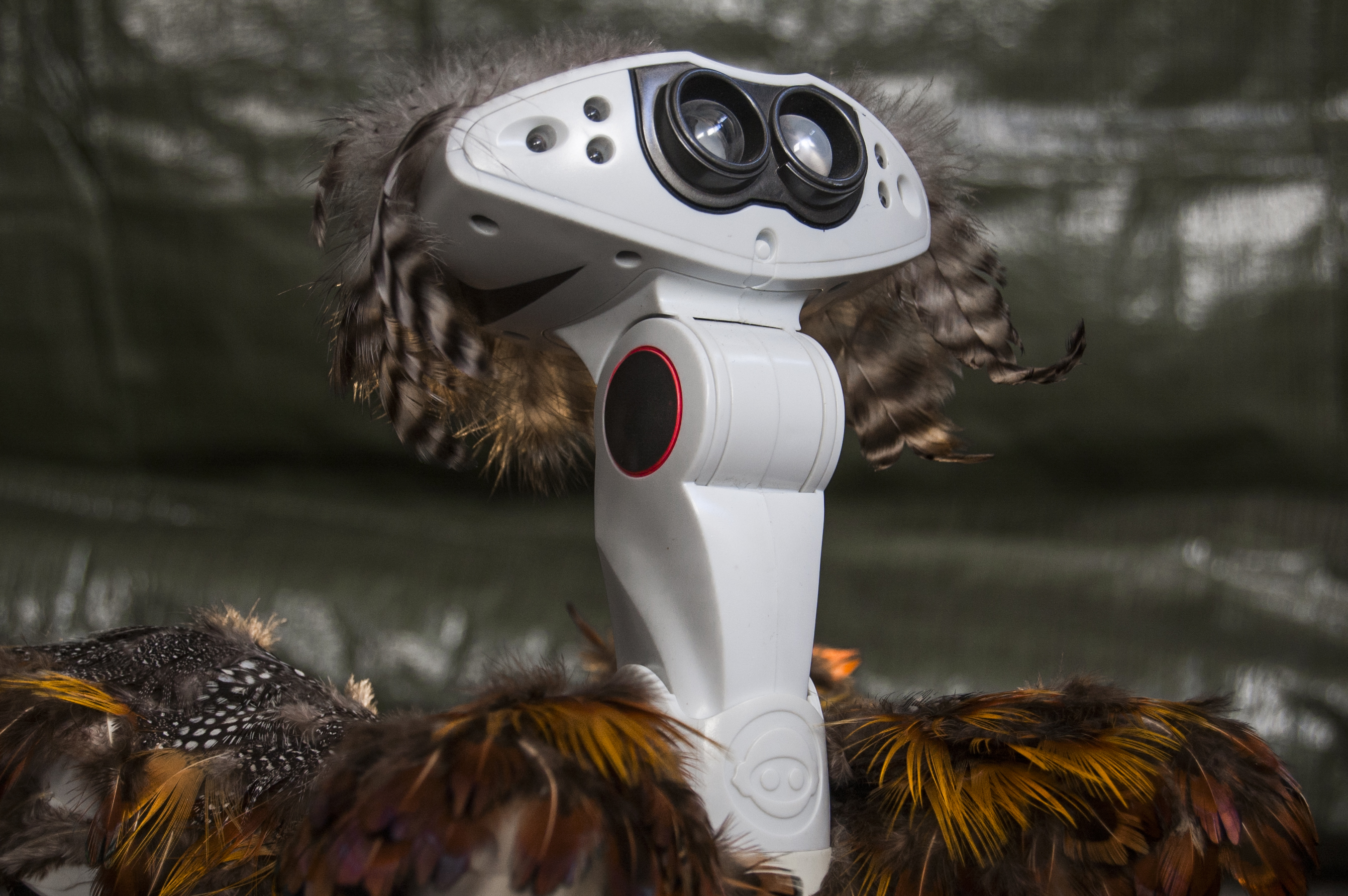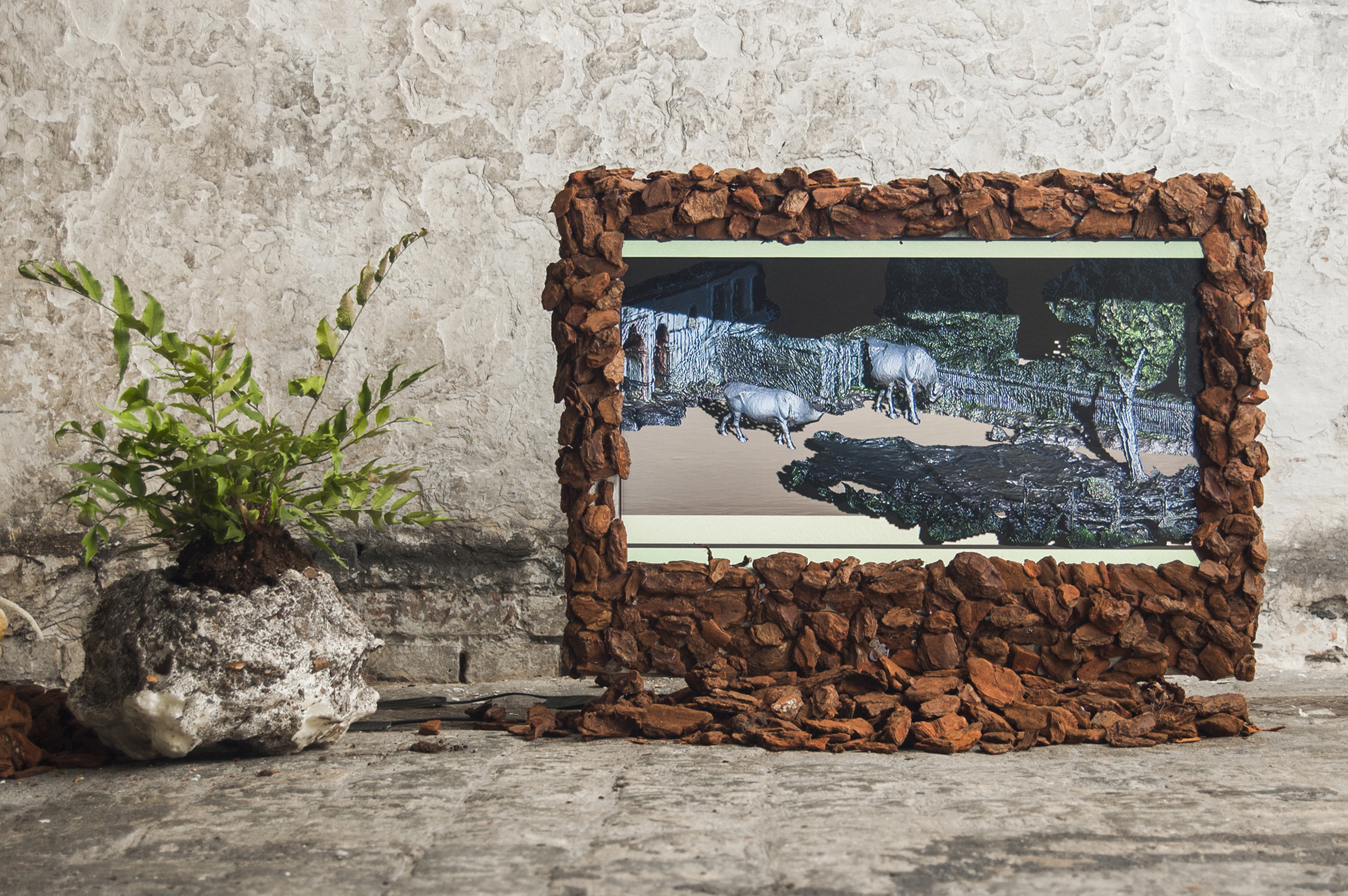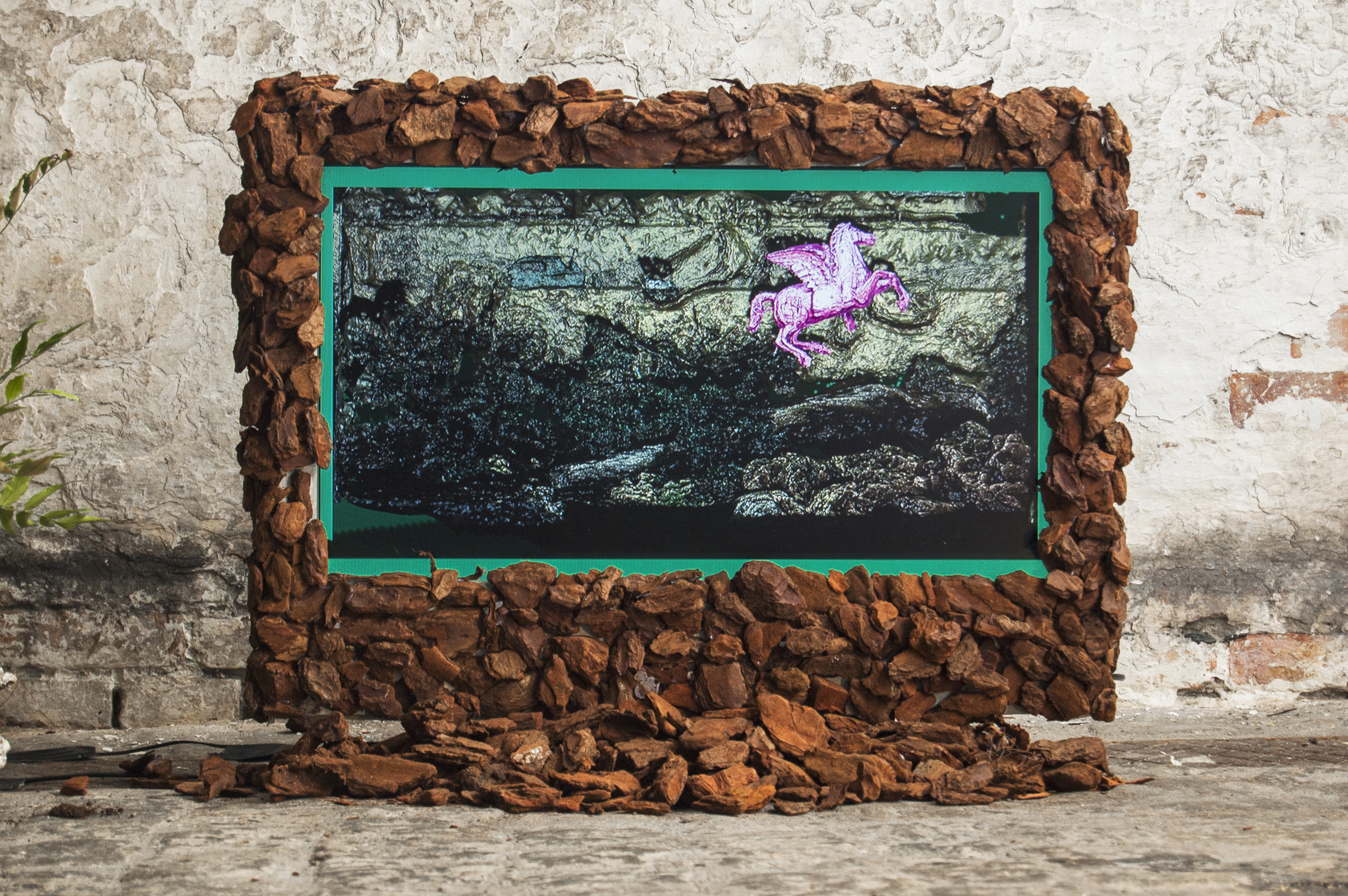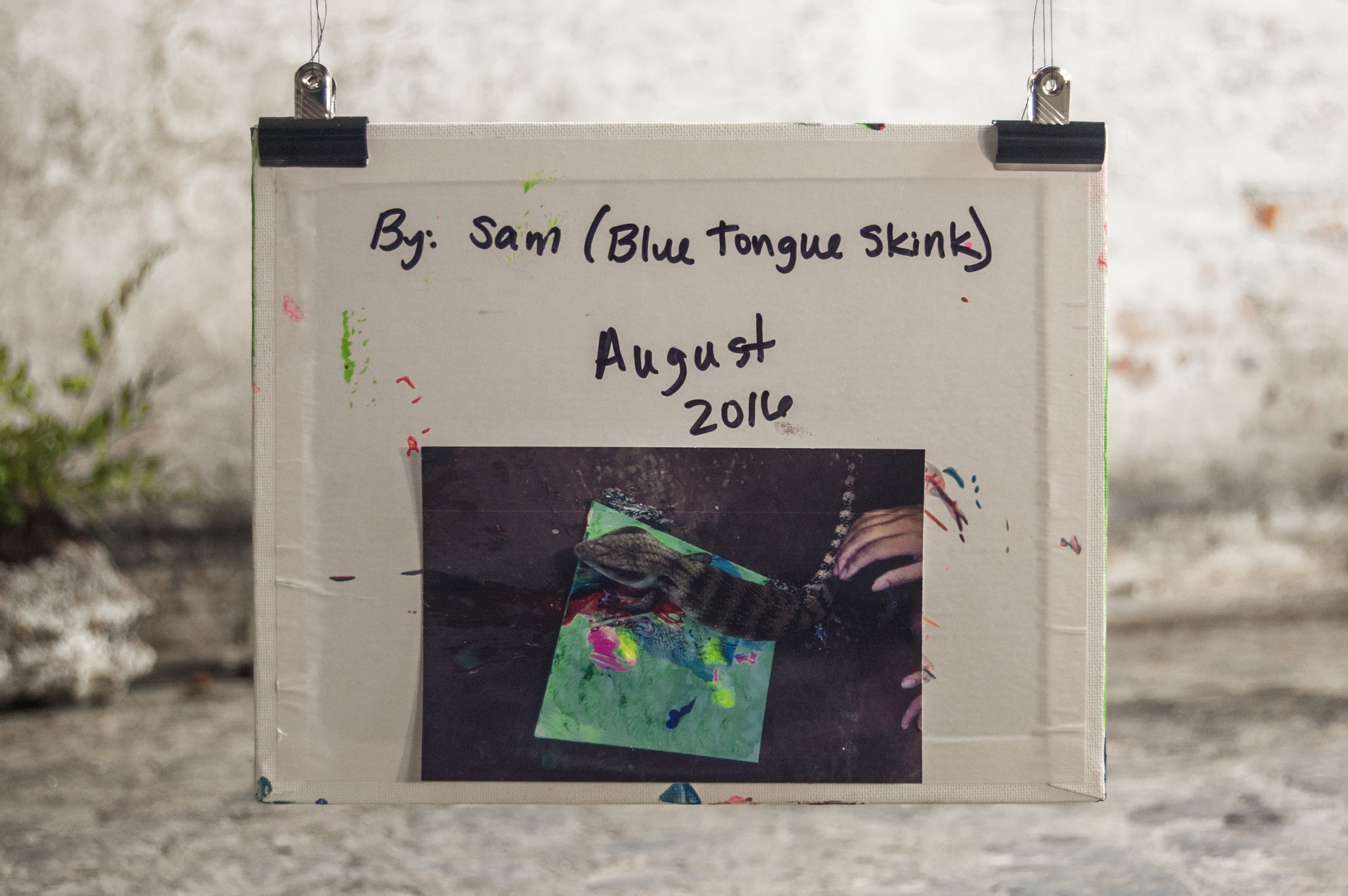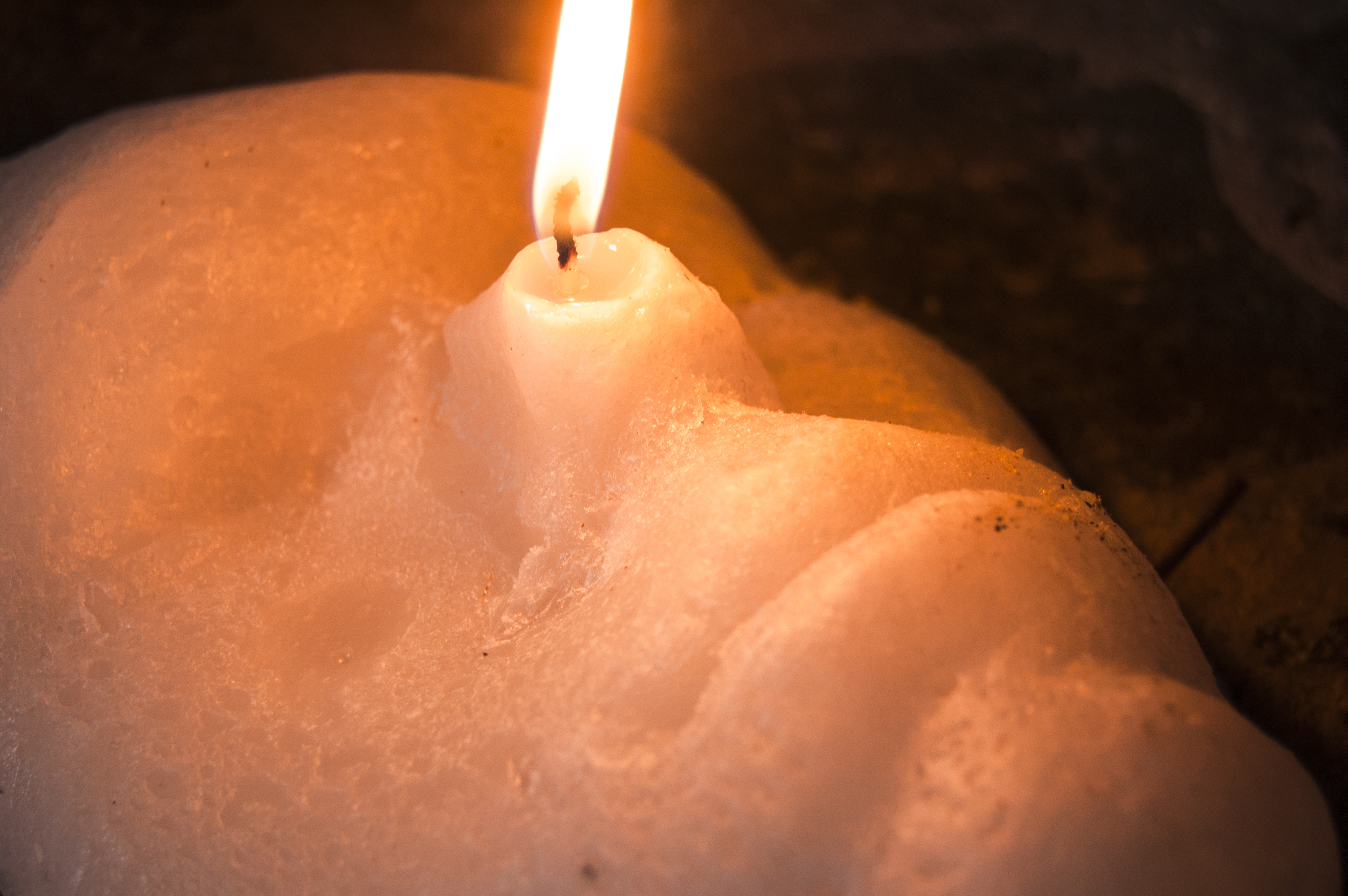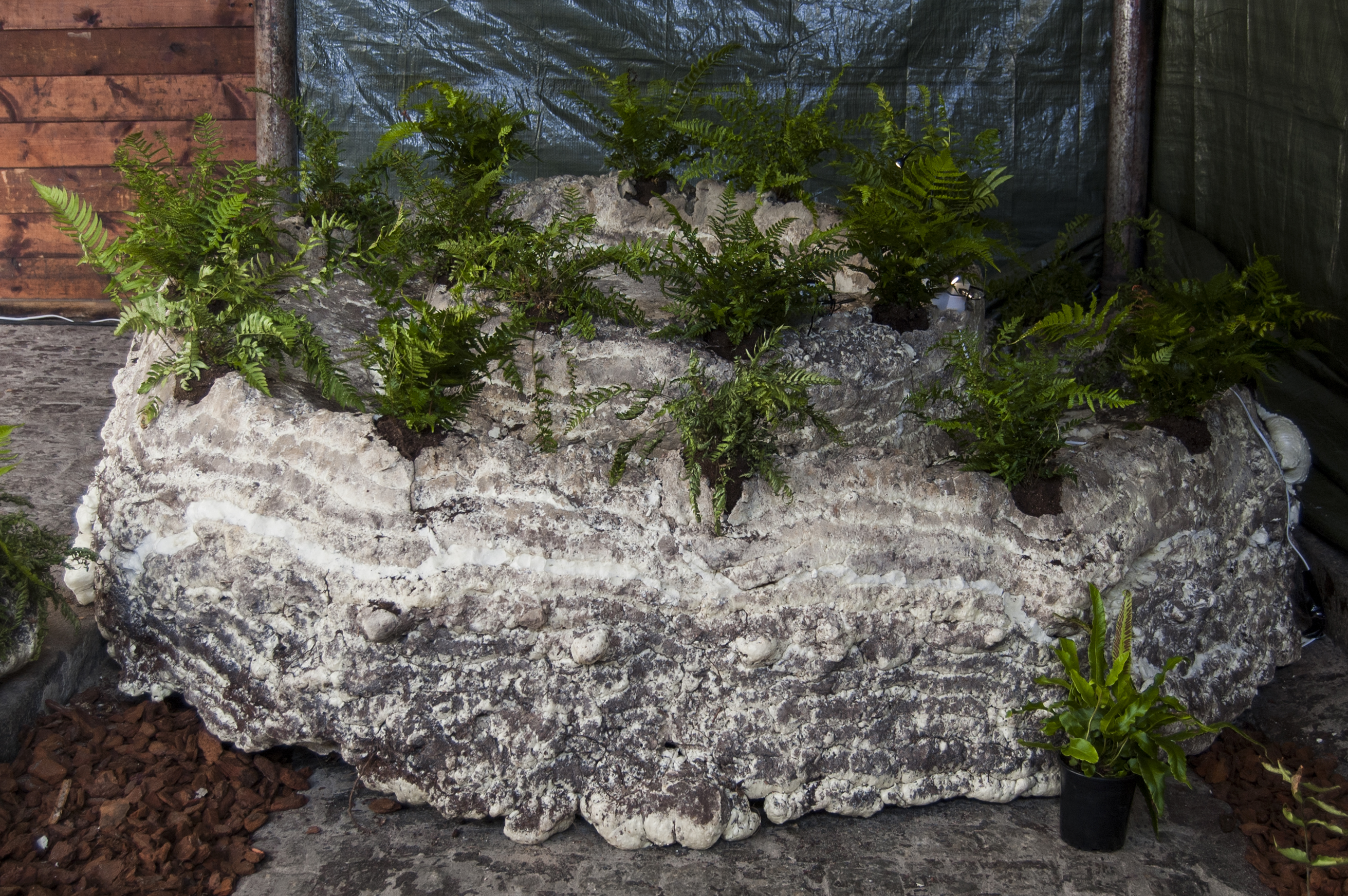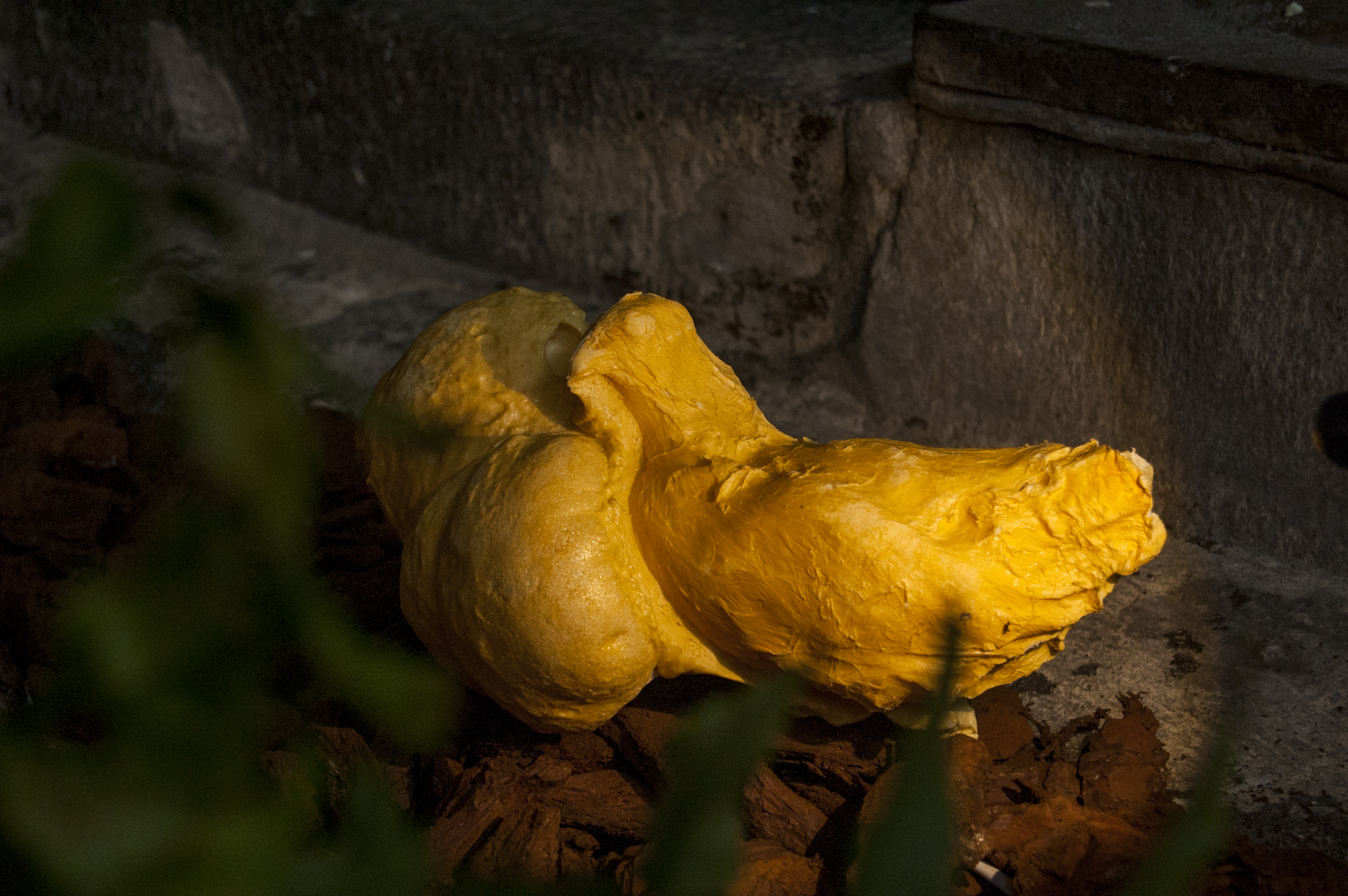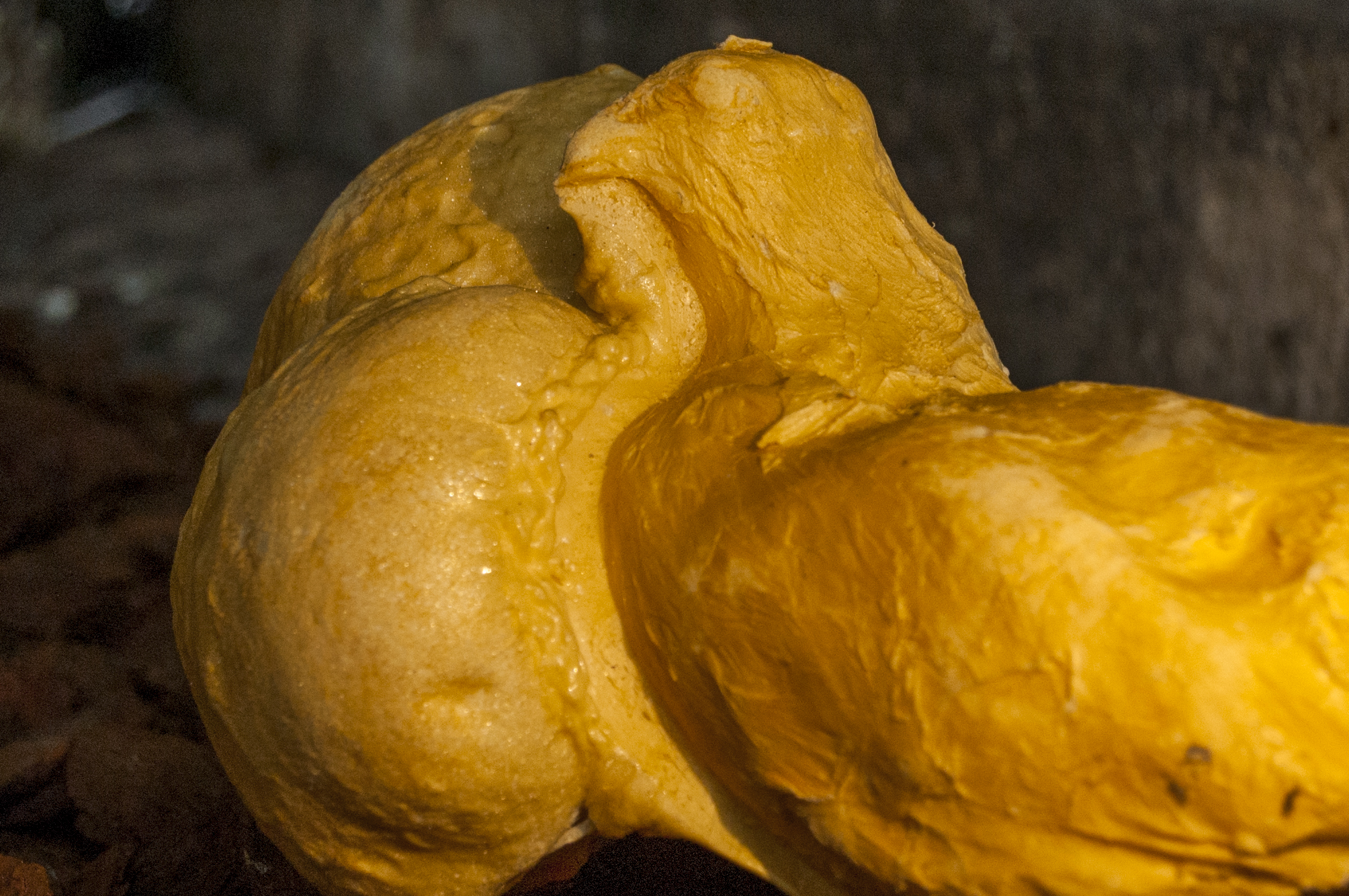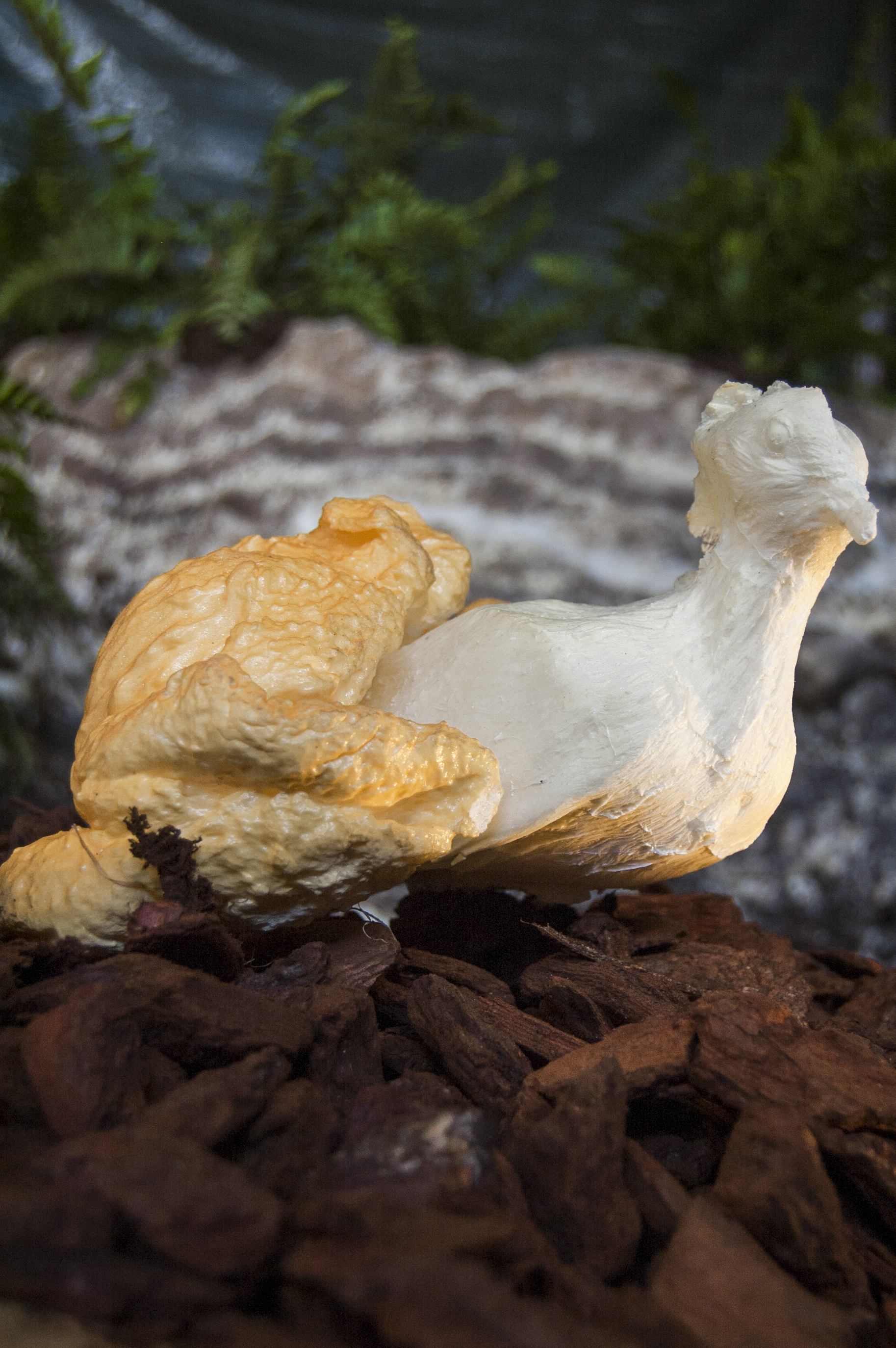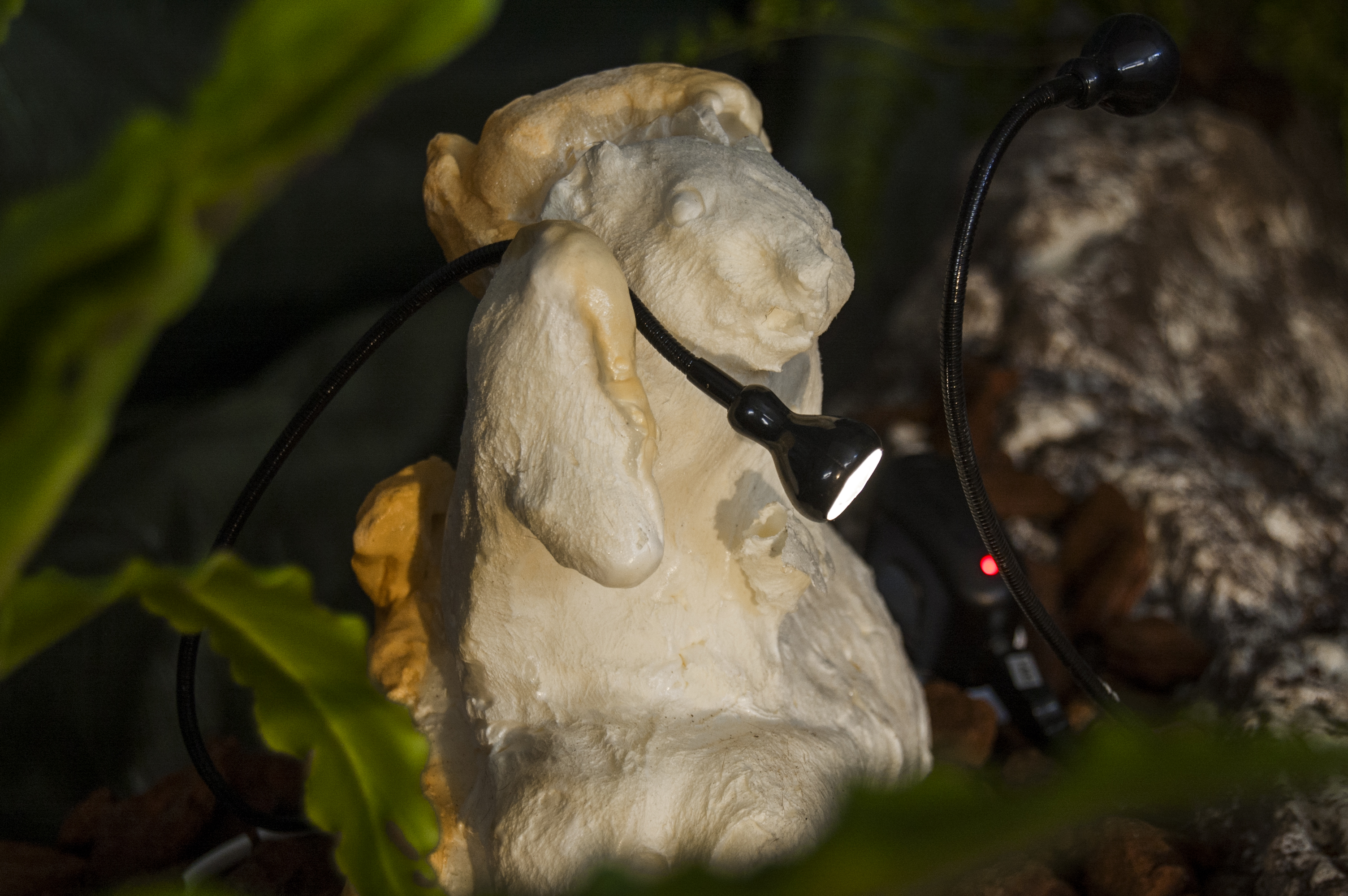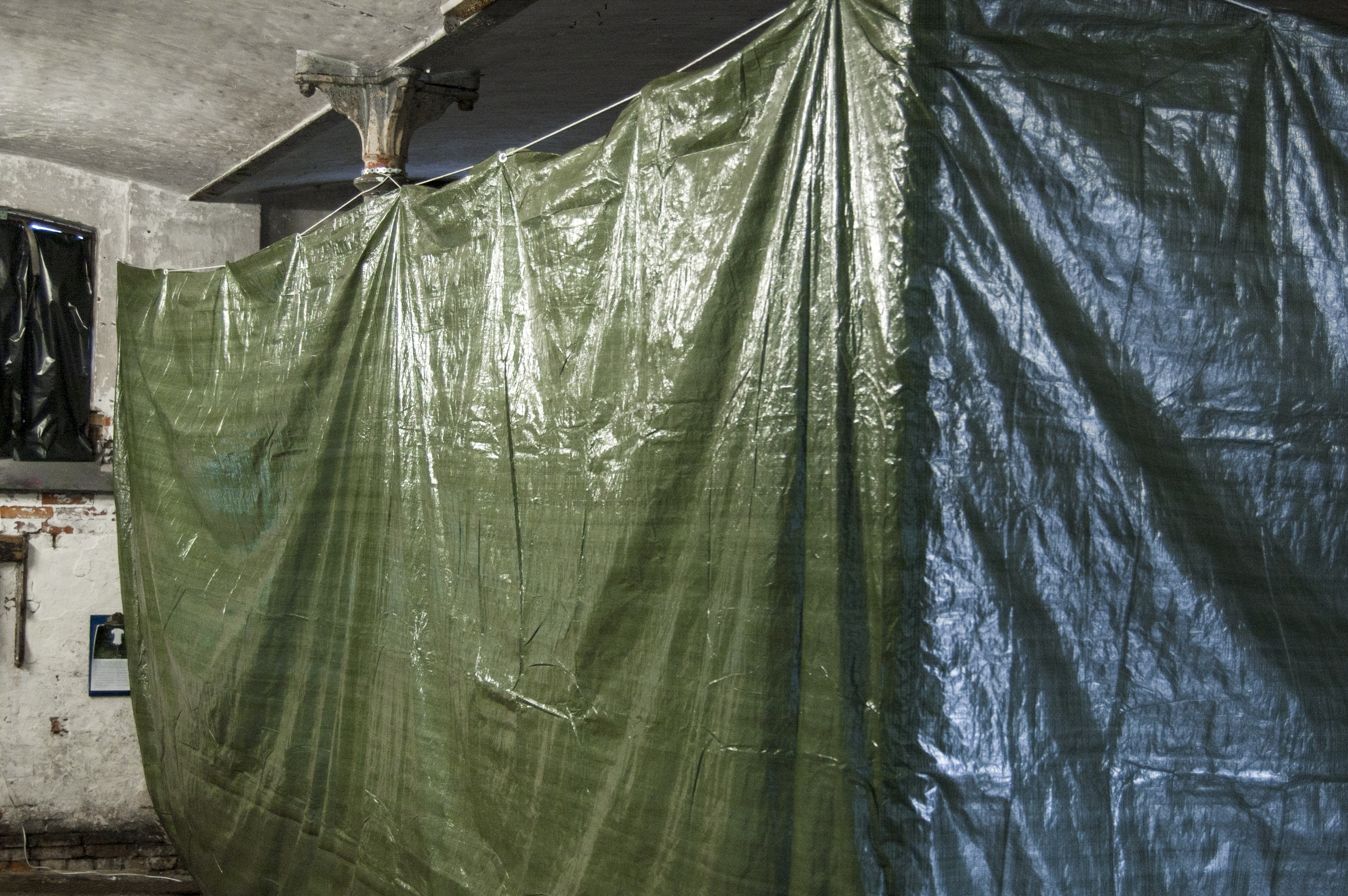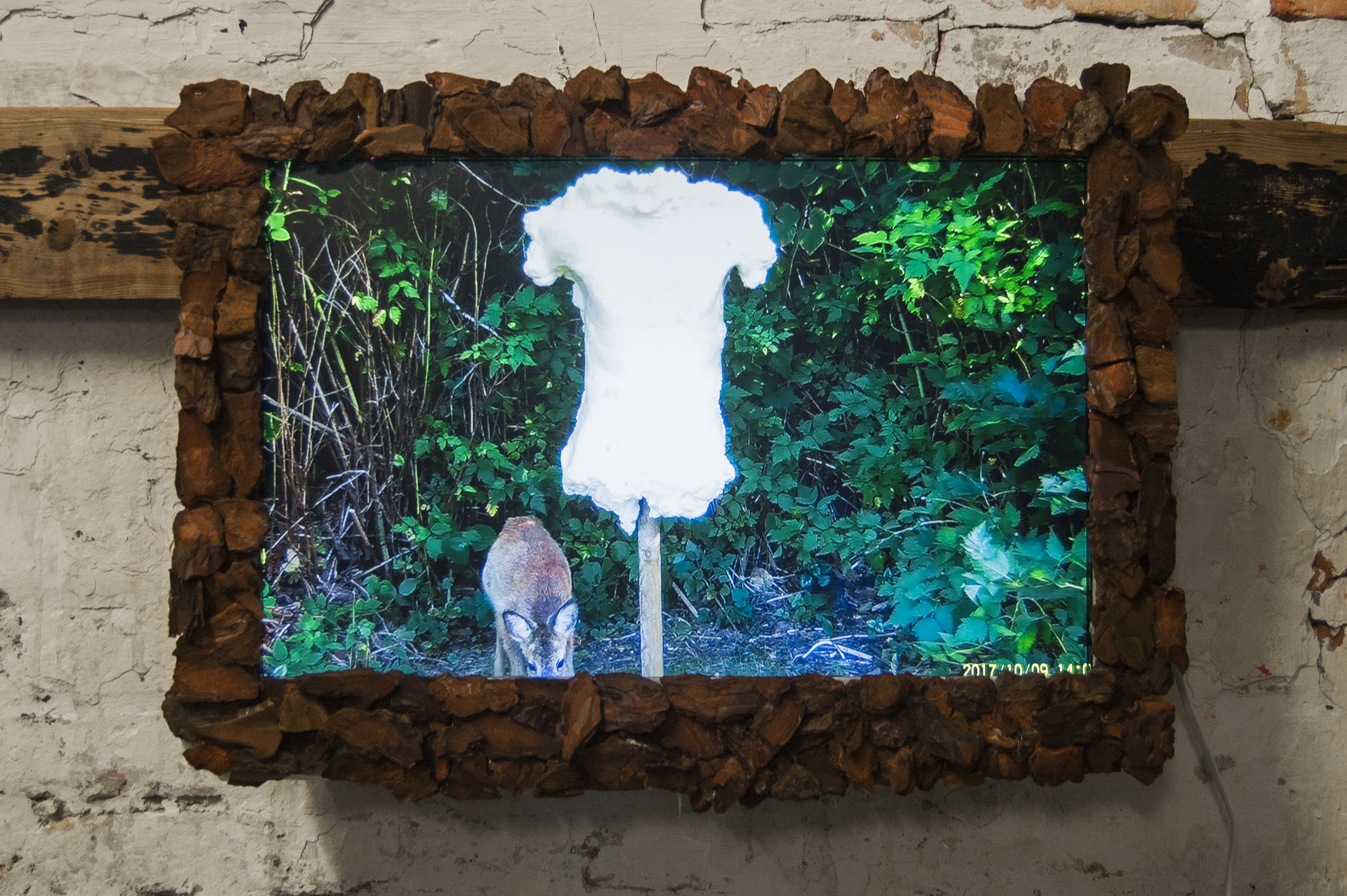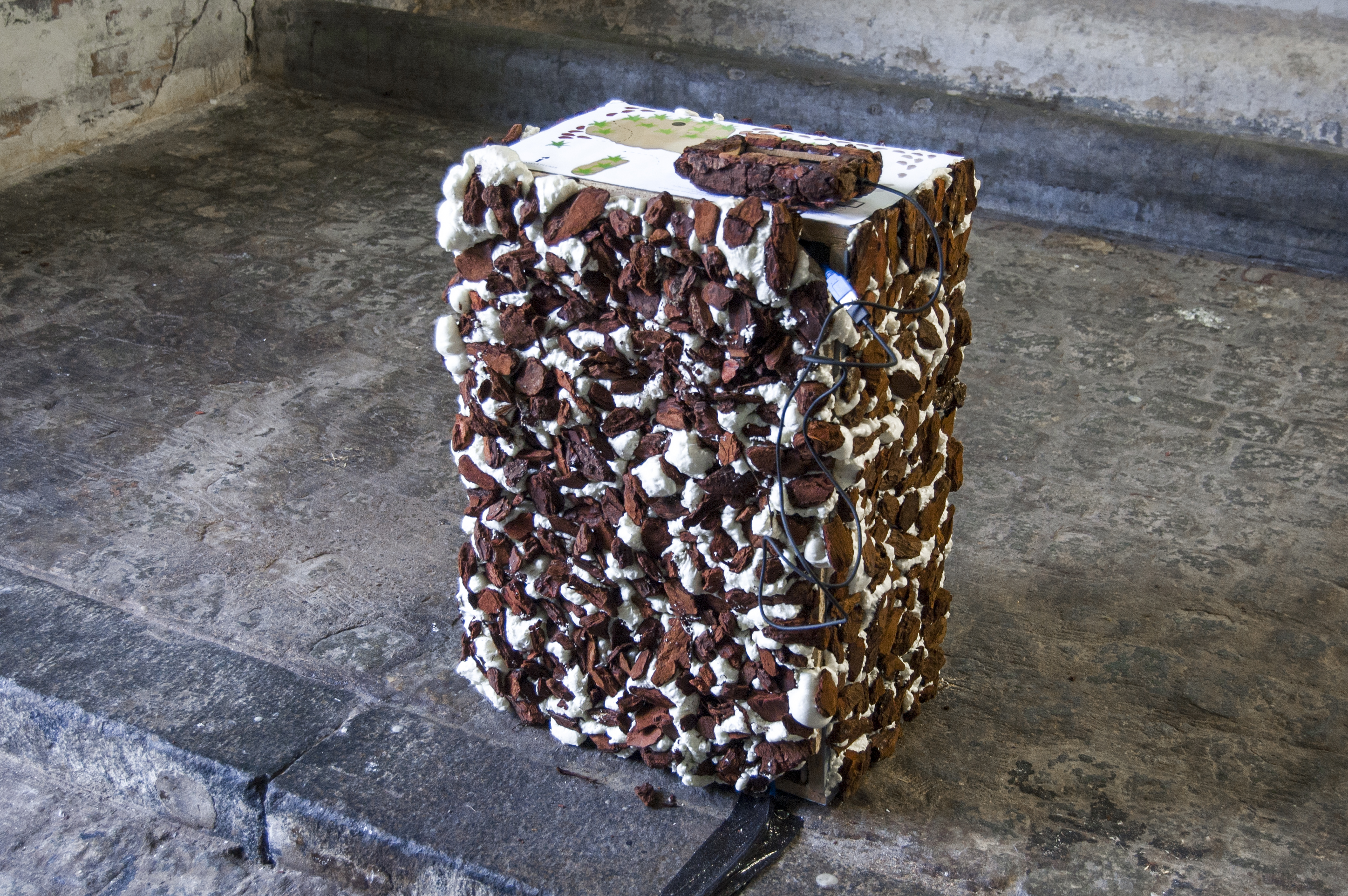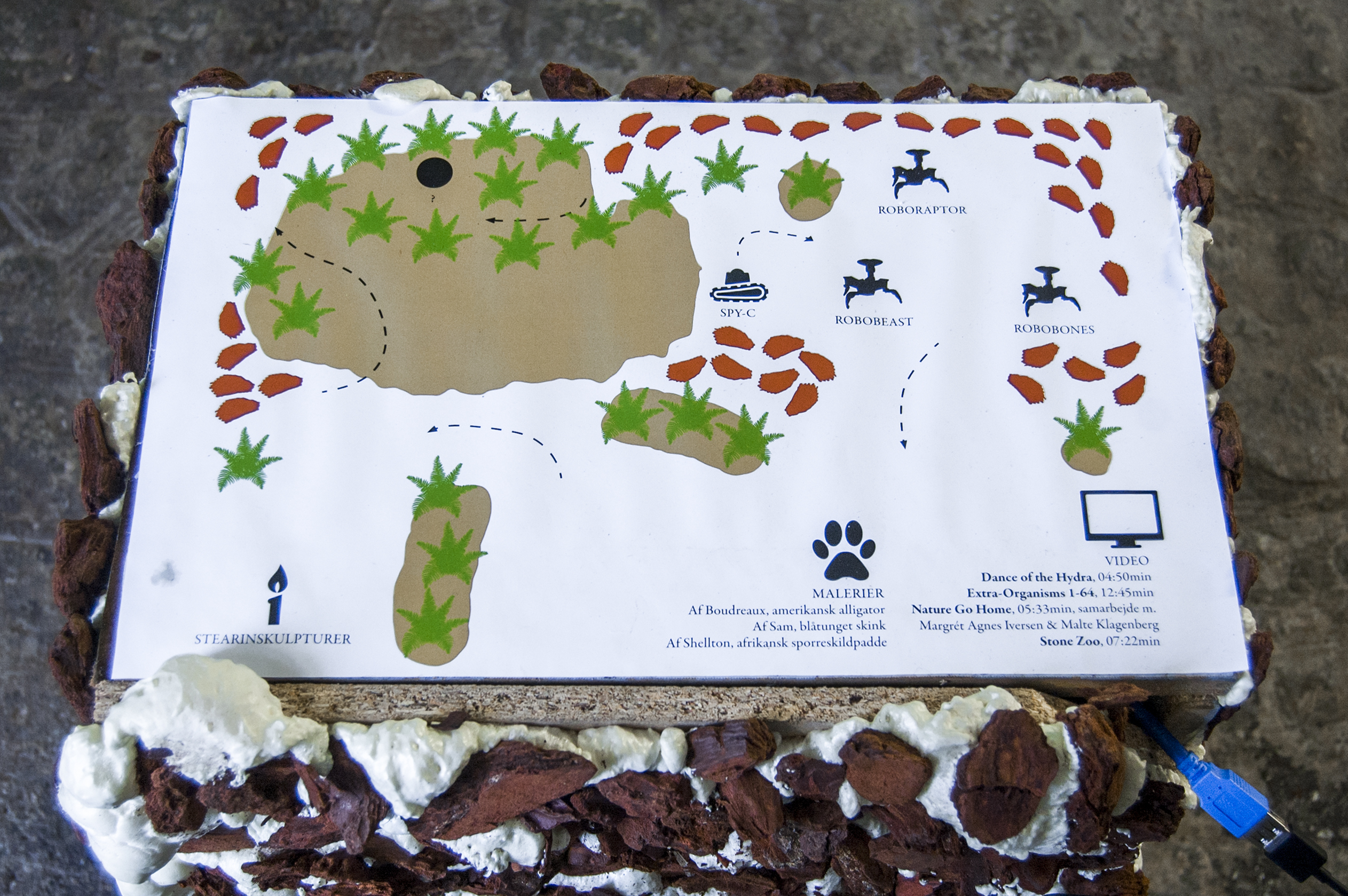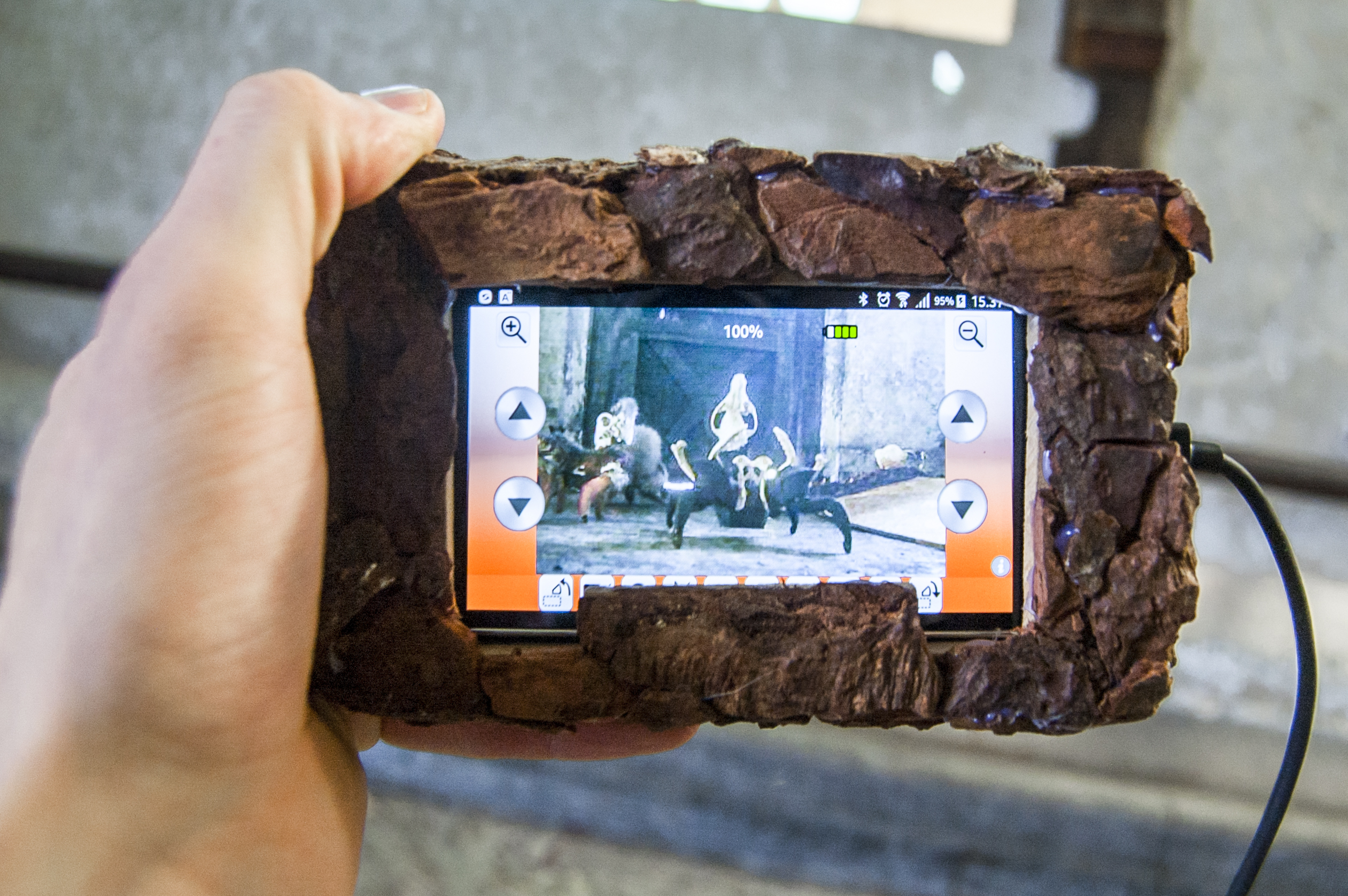Laurits Nymand Svendsen
REMOTE
The exhibition REMOTE was shown at KRÆ syndikatet in the old Meatpacking District in Copenhagen. During the exhibition, the space – an old stable, still with troughs and pickets – was home to robots with fur, feathers, and bones (one of these robots stars on the exhibition poster above), casts of animals and holes, videos, paintings made by reptiles etc. The works in REMOTE revolve around naturalness – about imitating and mixing up objects that appear natural or artificial. For example, are the robots only dressed up as animals – or could they equally be seen as animals dressed up as robots? Is the hydra – a microscopic polyp that stars in the video work Dance of the Hydra – less natural because it seemingly doesn’t age? The idea of the works in REMOTE was to challenge categorizations of the natural and the artificial.
Furthermore, REMOTE was a ”remote controlled exhibition”. The works themselves were hidden behind a plastic sheet, and as a visitor to the exhibition you wouldn’t experience them directly (unless you were very peeky). Instead, the whole exhibition was seen through the camera of a remote controlled robot. The robot would send live video and was controlled through a smartphone interface. As such, the robot was obviously designed to be used by humans, and to be used fairly intuituvely. However, to an extent visitors to the exhibition must also submit to the “nature” of the robot: Its body crawling along the ground on caterpillar tracks and its vision pixelating and making everything appear bigger and further away. In order to navigate through all of the exhibition you must get to know the robot.
A single work was shown outside of the plastic sheet enclosure. Far away from the exhibition space stand a game camera and a sculpture of a torso. The sculpture is covered in aniseed oil which attracts deer and other hoofed animals. The camera, which points towards the sculpture, takes a photograph whenever it registers movement, and the photographs are automatically forwarded to an email list. The work is live and continues so far indefinitely (send an email to remoteimages@hotmail.com to receive the photographs). In the exhibition and on email, the work addressed/addresses humans. But outside – at the physical location of the camera and the sculpture – the work is just as much for animals. In fact, the work needs the interaction of animals to be able to address humans at all.
REMOTE was curated by Elena Lundquist Ortíz and made with funding from The Danish Arts Foundation.
The exhibition as seen through a remote controlled robot of the type Spy-C

